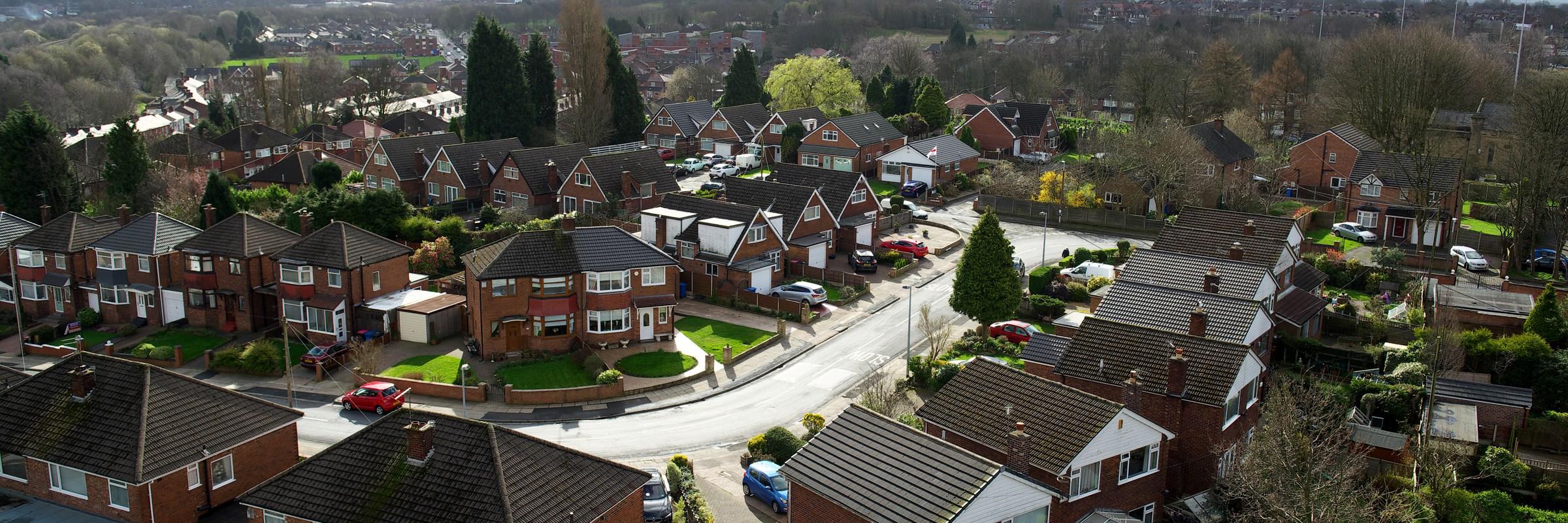
Greater Manchester publishes final draft of Plan for Homes, Jobs and the Environment
- The Spatial Framework will support Greater Manchester to build back better from the coronavirus pandemic
- Green belt impact reduced by 60% compared to first draft GMSF
- New transport links planned to connect all new development in Greater Manchester network
- The plan will now be reviewed by elected members across Greater Manchester, and if approved will go out for public consultation
- Residents will be asked if the plan is ready for submission to Government
GREATER Manchester leaders have today published the final draft of the city-region’s wide-ranging Plan for Homes, Jobs and the Environment – the Spatial Framework.
The plan, developed by all 10 boroughs and the Greater Manchester Combined Authority (GMCA), sets out how the city-region will build the right homes in the right places so everyone can live in environmentally sustainable villages, towns and cities connected by a fully integrated, high-capacity transport system.
The plan will now be discussed by Greater Manchester leaders on Friday 30 October. If endorsed, elected councillors from across the city-region will then have the opportunity to scrutinise the plans through November, and if approved by all 10 districts the plan will go out for an eight-week public consultation, beginning Tuesday 1 December.
The Spatial Framework
The Spatial Framework will provide a long-term plan for the kind of development that takes place across the city-region, and prevent the threat of unplanned development and risks to green belt land. It will also ensure Greater Manchester continues to be an attractive place to invest and do business, promoting growth and reducing inequalities.
The plan will also be a key tool in helping Greater Manchester recover from the coronavirus pandemic, making sure we can take action to strengthen our society, economy, and environment against future challenges. This will mean meeting our city-region’s housing need by building high quality affordable homes, connecting areas with environmentally sustainable transport links, as well as becoming carbon neutral by 2038.
The first draft of the Spatial Framework, published in 2016, saw more than 27,000 residents in Greater Manchester provide feedback, while a second round of consultation received 17,000 responses from people, businesses and community organisations.
Since 2016, the impact on green belt has been reduced by 60 per cent. This has been achieved by reducing the number of proposed sites, reducing the green belt take within sites, and proposing green belt additions.
Greater Manchester’s brownfield preference policy would also see brownfield sites brought forward in the early stages of the Plan. To support this approach, Greater Manchester was allocated £81.1m from the Government’s Brownfield Housing Fund to unlock brownfield sites for development. Twenty-four schemes have now been identified to benefit from the first tranche of the five-year funding allocation, delivering 4,353 homes across sites in all 10 boroughs. In total, a minimum of 5,500 homes on brownfied sites will be delivered through this funding.
Transport
To ensure that new homes and commercial sites are as sustainable as possible and supported by strong transport connections, the Spatial Framework has been developed alongside Transport for Greater Manchester’s Five-Year Transport Delivery Plan. This sets out the transport projects and powers that need to be planned, delivered or secured in the next five years to support the city-region’s growth. Alongside the Delivery Plan, ten Local Implementation Plans will outline the local level and town centre projects that will be delivered in each of Greater Manchester’s local authorities.
A final version of the Delivery Plan, local Implementation Plans and a refreshed version of Greater Manchester’s 2040 Transport Strategy will be published in November 2020 alongside the consultation.
Mayor of Greater Manchester Andy Burnham said: “The Greater Manchester Spatial Framework is the cornerstone of our plans for the future. This is a plan by and for all 10 boroughs, setting out how we can direct the sustainable growth that will benefit our communities and help Greater Manchester recover from the effects of this crisis.
“Since the first draft went out to consultation in 2016 you have responded in your thousands, and we have listened. This final draft has seen plans for green belt sites cut by 60 per cent, with a focus on bringing forward brownfield development wherever possible. Our plans will protect our most important natural areas, deliver a sustainable travel network, and guard our boroughs from the risk of unplanned development.
“While we continue to confront the coronavirus pandemic, we also have a duty to look ahead and make sure our city-region builds back better for our people and places. The Spatial Framework is about making sure our city-region leads the way in providing good jobs, good housing, and tackling the climate crisis. The plan we’re publishing today will be the blueprint for how Greater Manchester faces the future together.”
City Mayor of Salford Paul Dennett, GMCA Lead for Housing, Homelessness and Infrastructure, said: “This plan represents a shared vision for Greater Manchester, and it’s by working together across the city-region that we’ve been able to direct development to the most sustainable brownfield areas – primarily the cities and town centres – and minimise development on green belt as much as possible. We’ll be delivering almost 4,500 homes across Greater Manchester with the first tranche of funding from the Government’s Brownfield Housing Fund, and over the next five years will need to deliver a minimum of 5,500 throughout our city-region.
“We’re committed to building high-quality affordable homes for our residents, but we don’t want to build any new homes that aren’t fit for a low-carbon future. The Spatial Framework will require all new development to be net-zero carbon by 2028, and all new developments will either be served by our existing transport network or connected by new infrastructure.”
Public consultation
Government now requires Greater Manchester to ask residents whether the Spatial Framework, and the evidence on which it is based, meet what are called “tests of soundness”, meaning this consultation will be more technical than previous rounds.
These tests include whether the Spatial Framework promotes economic growth and makes provision for development; whether it is backed up by robust evidence; whether the plans are based on effective and achievable policies; and whether they are consistent with policies at a national level.
At the end of the final consultation phase, the plan will be prepared for submission to the Secretary of State next year. Following an independent examination and approval by the Secretary of State, the Greater Manchester Spatial Framework would be ready for adoption by 2022.
The evidence base for the plan will be published ahead of the eight-week consultation period, meaning people will have more than 12 weeks to view and familiarise themselves with the content before submitting responses.
To ensure the highest safety standards, work is ongoing to facilitate a range of engagement methods to allow residents to view all consultation documents and offer their responses. These will include virtual exhibitions, digital consultations, video meetings and social media or online chat facilities. Alongside this, work is also underway to ensure people who do not have internet access are able to engage with the consultation through alternative means.
For more information about the Greater Manchester Spatial Framework, visit https://www.greatermanchester-ca.gov.uk/gmsf2020.
Clean Air and Minimum Standards for taxis and private hire
Alongside the Spatial Framework, Greater Manchester is also currently seeking a wide range of views on Greater Manchester’s proposals for the biggest Clean Air Zone (CAZ) in the UK outside London, and minimum standards for taxis and private hire vehicles licensed in the city-region. Residents are encouraged to have their say on both consultations, which will close on Thursday 3 December 2020. Visit www.gmconsult.org for more information.
Article Published: 23/10/2020 14:12 PM



